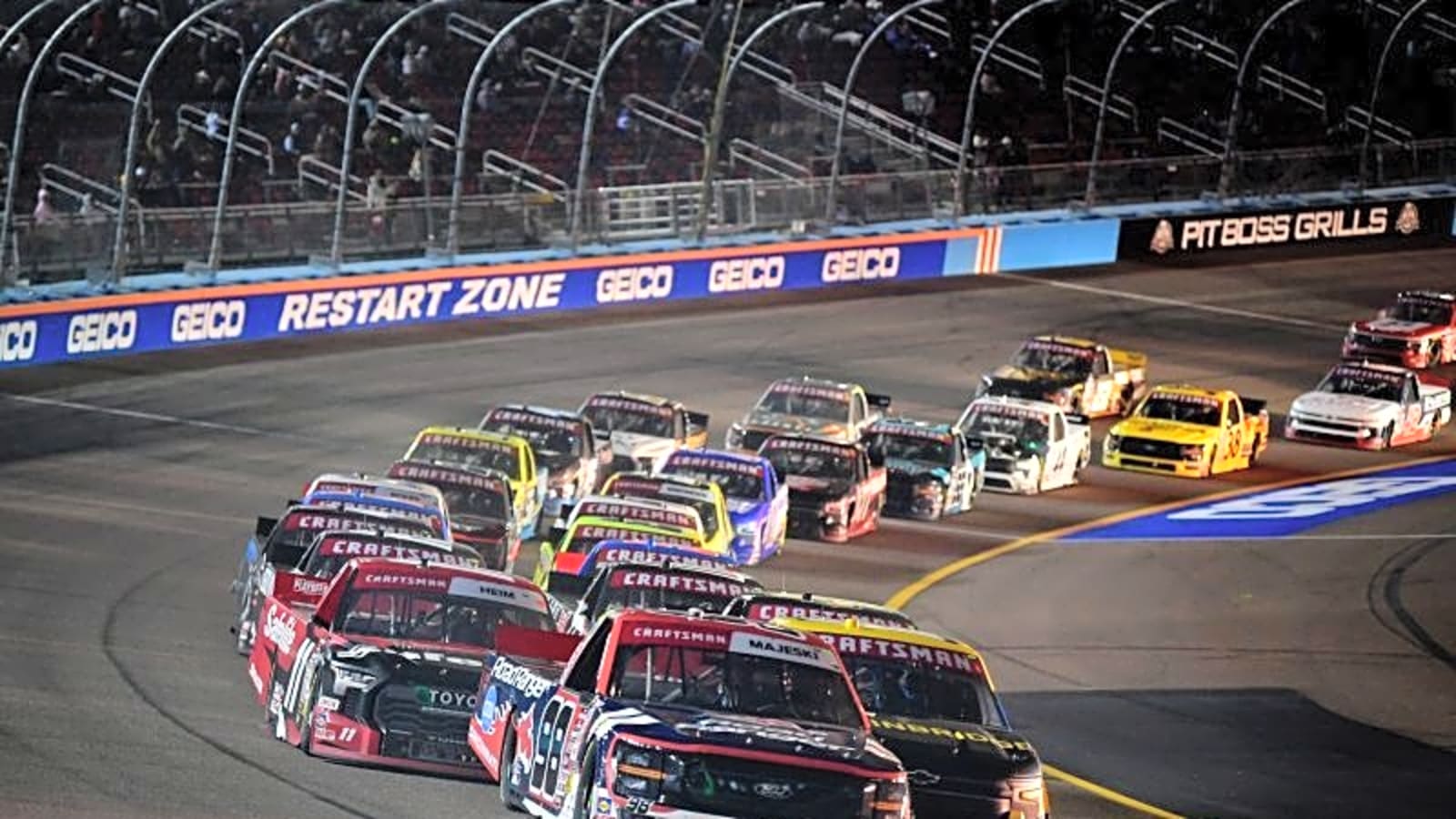
The NASCAR Craftsman Truck Series is about to embark on one heck of a ride. After three decades of avoiding street courses like they were the plague, trucks are diving headfirst into uncharted territory. And honestly, it’s about damn time.NASCAR dropped the bombshell Wednesday morning, releasing the complete 2026 schedules that’ll have every truck fan marking their calendars. The big news? These workhorses are hitting the streets of St. Petersburg for the first time on February 28th. That’s right. The series that’s been playing it safe on ovals is finally ready to dance with the concrete barriers.
St. Petersburg Brings Fresh Energy to Craftsman Truck Series
Picture this. 36 trucks thundering through the streets of St. Petersburg, sharing the weekend spotlight with IndyCar’s season opener. The 1.8-mile street course has been IndyCar’s playground for four years running, but now it’s time for NASCAR’s development drivers to show what they’ve got on the same asphalt.
Jusan Hamilton, NASCAR’s managing director of competition operations, didn’t mince words about the decision. Hamilton’s got a point. If these drivers want to make it to Cup Series someday, they’d better learn how to wrestle a race car through city streets without kissing the wall.
“We want to make sure that our development series are racing at track types that allow them to advance and be prepared for the Cup level,” Hamilton explained. The logic sounds as a dollar. Cup Series drivers are already cutting their teeth on street courses, so why shouldn’t the truck drivers get the same education?
The timing couldn’t be better either. The Tampa and St. Pete areas represents a massive media market that NASCAR’s been eyeing, and keeping those Craftsman Truck Series teams on the East Coast early in the season makes financial sense. Nobody wants to burn through their budget hauling equipment across the country in February.
Historic Tracks Make Their Triumphant Return
St. Petersburg isn’t the only story worth telling. Rockingham Speedway’s coming back to the party, and that’s music to old-school racing fans’ ears. The “Rock” hosted its first NASCAR races in over a decade back in April, and the place was electric. Saturday’s Xfinity Series race sold every single ticket which is a testament to the hunger fans have for real, authentic racing.
The Easter weekend doubleheader on April 3-4 gives both the O’Reilly Auto Parts Series and Craftsman Truck Series center stage without Cup Series competition. That means pure, undiluted focus on the future stars of the sport. Hamilton’s betting that fans will turn out in droves again, and based on this year’s response, he’s probably right on the money.
Road Course Racing Expands Championship Horizons
Lime Rock Park’s also getting another shot at hosting Craftsman Truck Series racing magic. The Connecticut road course made its debut this past June, and the New England faithful showed up in force. There’s something special about watching trucks navigate those rolling hills and tight corners.
The track’s hosting one of four “stand-alone” events for trucks next year, which means no Cup Series distraction. Hamilton’s strategy is signals added support for the series to explore new markets and reach fans who might not otherwise experience NASCAR racing up close.
Championship Format Gets Major Overhaul
The Craftsman Truck Series’ playoff structure’s getting a fresh coat of paint, too. New Hampshire Motor Speedway takes over regular-season finale duties on August 22nd, while Bristol Motor Speedway kicks off the postseason fireworks on September 17th. Kansas Speedway joins the truck playoff rotation for the first time on September 26th, adding another wild card to an already unpredictable championship hunt.
Looking Ahead to Championship Weekend
Come November, both series wrap up their seasons at Homestead-Miami Speedway, bringing NASCAR Championship Weekend back to South Florida for the first time since 2019. Phoenix Raceway, which has hosted the finale for six straight years, moves to Round of 8 opener duties. This is a significant shift that’ll change championship strategies across all three national series.
The 2026 Craftsman Truck Series schedule represents more than dates on a calendar. It’s a statement about NASCAR’s commitment to developing tomorrow’s stars while honoring the sport’s rich heritage. From the concrete canyons of St. Petersburg to the historic banking of Rockingham, truck drivers will face every challenge the sport can throw at them.
These changes don’t just affect drivers and teams. They’re reshaping how fans experience NASCAR racing. Street courses bring racing to urban markets that traditional speedways can’t reach, while historic tracks like Rockingham connect the sport to its roots in ways that modern facilities cannot match.
Final Thoughts
The expanded schedule gives the Craftsman Truck Series 23 regular-season races plus a seven-race playoff format that mirrors its Cup Series counterpart. Every race matters more, every point counts toward championship dreams, and every weekend offers a new opportunity for breakthrough performances.
As we look toward 2026, one thing’s certain. The NASCAR Craftsman Truck Series is evolving into something special. These aren’t just steppingstones to Cup Series careers anymore, but they’re becoming destinations worth celebrating in their own right.
More must-reads:
- Report reveals how hard Warriors tried to trade for LeBron James
- Big Ten's College Football Playoff expansion idea is 'absurd,' ESPN host says
- The '2024-25 NFL rushing touchdown leaders' quiz
Breaking News
Trending News
Customize Your Newsletter
 +
+
Get the latest news and rumors, customized to your favorite sports and teams. Emailed daily. Always free!








